Our lives are not complete without food, and it can also be an intriguing window into many cultures and traditions. Every nation has a distinctive cuisine, and while certain meals are enjoyed by all people, others may take some getting used to. We’ll be looking at ten of the strangest and best dishes from around the world in this article. We advise you to have an open mind and try new foods despite the fact that some of these recipes may initially seem strange or unappealing.
The sense of adventure and discovery that comes with trying new foods is part of the appeal. It’s thrilling to try something new and unusual, especially if it’s a food you’ve never tried before. These dishes may have cultural or historical significance in some cases, which adds to their allure. Century eggs, for example, are a traditional Chinese dish that has been enjoyed for centuries, whereas hakarl is a distinctive Icelandic dish that reflects the country’s rugged landscape and seafaring culture.
Of course, not everyone will like every cuisine, and that’s fine. So it’s crucial to approach fresh cuisine with curiosity and an open mind. You never know when you can find a new favorite food or uncover some fascinating facts about another culture. So, without further ado, let’s explore the world of strange and amazing delicacies!
8: Shirako (Japan)
Shirako, also known as “fish sperm,” is a Japanese delicacy with a reputation for being difficult to swallow. It is made from the seminal fluid, or milt, of male fish such as cod, anglerfish, and pufferfish.
To make the dish, the milt is carefully extracted from the fish and thoroughly washed. It is then lightly seasoned and served raw or lightly cooked, frequently with soy sauce and grated daikon radish on the side.
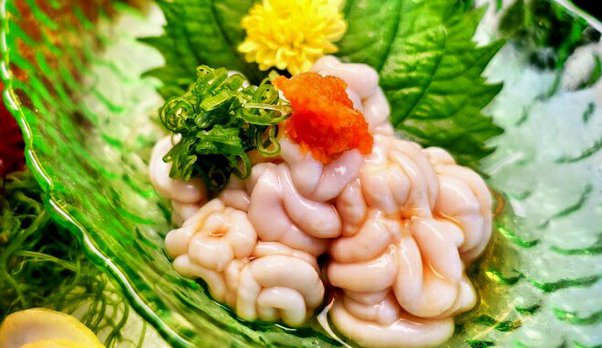
Shirako’s flavour and texture are frequently described as creamy, delicate, and slightly sweet, with a soft and custard-like texture. While some may find the thought of eating fish sperm repulsive, the dish is highly valued in Japan for its distinct flavour and texture.
Shirako is commonly presented in upscale sushi establishments or as part of traditional Japanese kaiseki cuisine. Shirako is a popular delicacy among adventurous foodies and fans of Japanese cuisine, despite its reputation as an unusual and controversial dish.
7: Rocky Mountain Oysters (USA)
Rocky Mountain Oysters are a specialty that originated in the Western United States, specifically in the Rocky Mountain region. This dish, contrary to its name, is made from bull, bison, or sheep testicles rather than seafood.
To make the dish, the testicles are cleaned and skinned before being sliced into thin slices. They are then dipped in a seasoned flour mixture before being deep-fried until golden brown and served with dipping sauces.

Rocky Mountain Oysters’ flavour and texture are often compared to chicken or pork, with a slightly chewy texture and a mild, slightly gamey flavour. In certain parts of the Western United States, the dish is considered a delicacy and is frequently served as an appetiser or snack.
While some people are put off by the idea of eating testicles, Rocky Mountain Oysters are a beloved and iconic dish in the Western culinary landscape. They are frequently served at local festivals and events, and are a true testament to the American West’s adventurous spirit and distinct food culture.
6: Fried Tarantulas (Cambodia)
Fried tarantulas are a well-liked treat in Cambodia, especially in the town of Skuon where street sellers sell them. Whole tarantulas, including the legs and belly, are deep-fried until they are crispy and golden brown to create the dish.
The tarantulas are washed before being seasoned with a salt, sugar, and garlic mixture. After that, they are dipped in a batter consisting of rice flour and deep-fried until they are well cooked and have a crispy outside.

Fried tarantulas have a flavour and texture similar to fried fish or chicken, with a crunchy outside and a delicate, meaty interior. Others claim it has a mild, earthy flavour, while others believe the flavour is somewhat nutty.
Tarantulas are a common and traditional snack in Cambodia and are known to be a healthy source of protein, despite the fact that the idea of eating them may be unsettling to some. Fried Tarantulas are a delicacy you must try if you’re an experimental eater trying to broaden your palate.
5: Century Egg (China)
Century Egg, sometimes referred to as preserved egg or hundred-year egg, is a beloved traditional Chinese treat with a distinctive flavour and look. Century eggs are not literally a century old, despite what their name might imply. Instead, they are eggs that have been preserved for several weeks to many months in a solution of clay, ash, salt, quicklime, and rice straw, depending on the desired flavour and texture.
Century eggs are prepared by carefully coating the eggs in a mixture of the ingredients listed above and then storing them in a cool, dark place. During this time, the alkaline substances in the mixture react with the proteins and fats in the egg, causing the egg white to turn translucent and the yolk to develop a creamy, cheese-like consistency. The end result is a grayish-green egg with a slightly pungent aroma.
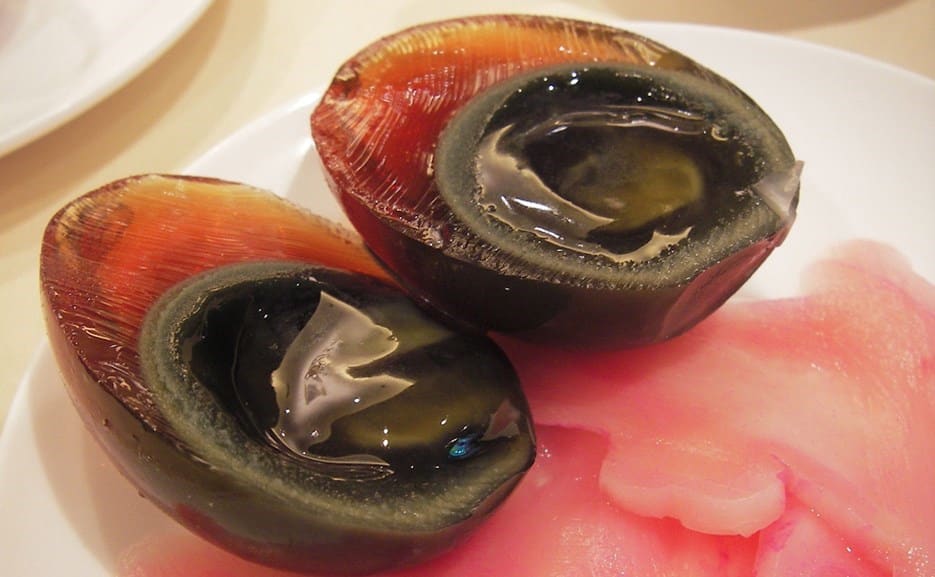
In terms of flavour and texture, century eggs are frequently described as having a salty and savoury flavour with a slightly sweet aftertaste. The yolk is creamy and rich, while the egg white can be jelly-like and slippery. Some people detect hints of ammonia or sulphur, which can be offensive to those who are unfamiliar with the flavour.
Despite its unusual appearance and flavour, century eggs are regarded as a delicacy in many parts of China and Southeast Asia. It can be eaten as a snack on its own or as an ingredient in a variety of dishes such as congee, tofu, or stir-fried vegetables. So, if you’re feeling daring and want to try something new, give century eggs a shot and see if they tickle your taste buds!
4: Balut (Philippines)
Balut is a popular Filipino street food with a unique appearance and texture. It’s essentially a fertilised duck egg that’s been boiled and eaten whole, complete with the developing embryo inside. While this may sound disgusting to some, balut is a delicacy in many parts of the Philippines and other Southeast Asian countries.
To make balut, the eggs are first incubated for 18-21 days, or until the embryo has reached a certain stage of development. They are then boiled for about 20-30 minutes before being ready to eat. Balut is usually sold by street vendors who carry baskets of warm eggs and serve them with salt or vinegar on the side.
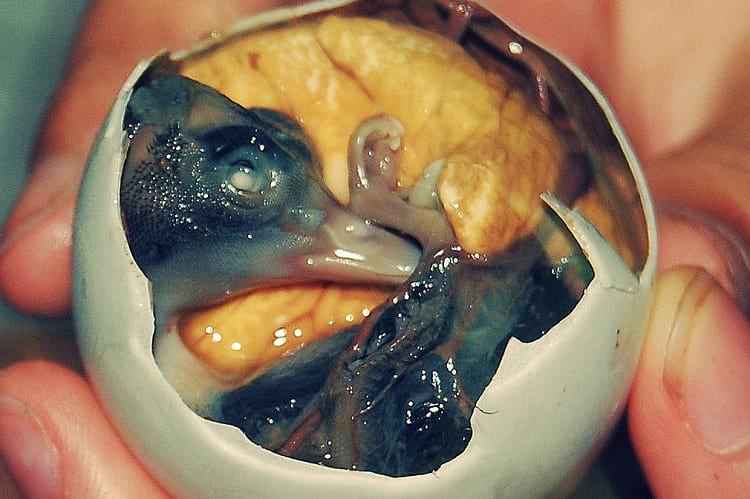
The texture and flavour of balut might change depending on the embryo’s stage of development. The embryo will have bones, feathers, and a soft beak at roughly 18 to 19 days; around 20 to 21 days, it will be more advanced and have a more defined structure. While the yolk is frequently described as being rich and tasty with a slightly creamy texture, the egg white resembles a hard-boiled egg. The embryo itself might taste meaty or gamey, and the bones and feathers give the dish a distinctive crunch.
Balut is a well-liked and well-known street dish in the Philippines, where it is frequently eaten as a late-night snack or accompanied with cool beer. It may not be for everyone, though. Some people think it has aphrodisiac qualities and is also regarded as an excellent source of protein and other minerals. Why not give balut a go if you’re feeling daring and see what the hype is about?
3: Huitlacoche (Mexico)
Huitlacoche, also known as corn smut or Mexican truffle, is a popular delicacy in Mexican cuisine. It is a fungus that grows on corn ears, transforming the kernels into black, bulbous growths prized for their distinct flavour and texture.
In order to make huitlacoche, infected corn ears are harvested and the fungus is scraped off and cleaned. After that, the fungus is usually cooked with onions, garlic, and other seasonings to make a savoury filling for tacos, tamales, or quesadillas.
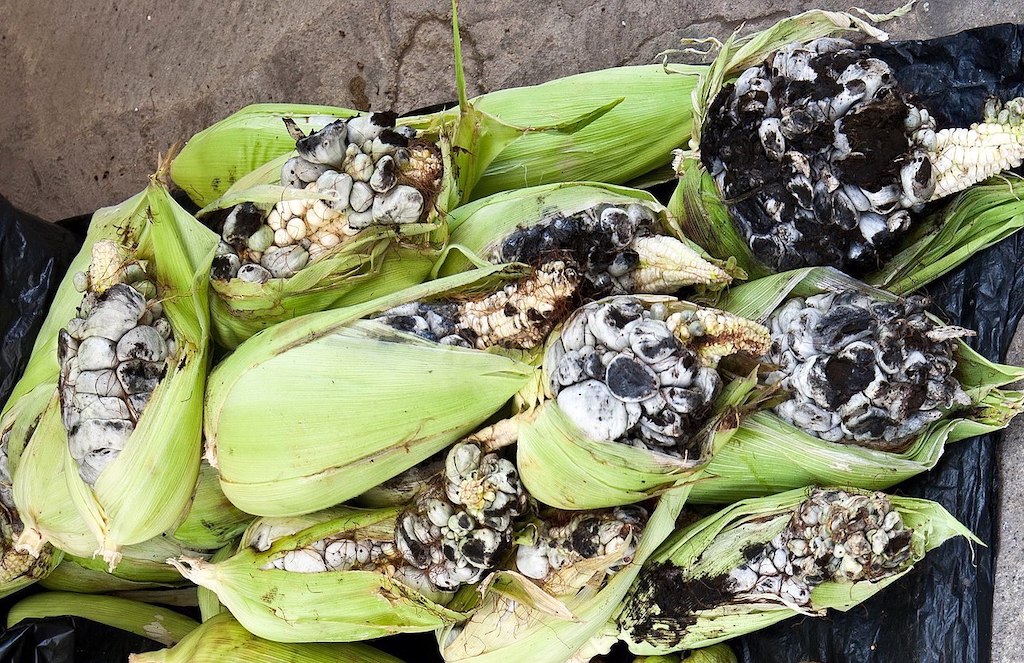
Huitlacoche’s flavour and texture are often compared to mushrooms, with a slightly earthy and nutty flavour. When you bite into the kernels, the texture is soft and slightly chewy, with a slight pop. Some people say huitlacoche has a slightly sweet taste with a hint of corn flavour.
Despite its unusual appearance and origin, huitlacoche is a well-known and beloved ingredient in Mexican cooking. Some believe it has medicinal properties, such as boosting the immune system and assisting digestion. If you want to broaden your culinary horizons and try something new, try huitlacoche and discover the delicious and distinct flavours of Mexican cuisine.
2: Hakarl (Iceland)
Hakarl, also known as fermented shark, is a traditional Icelandic delicacy known for its strong odour and unusual flavour. It is made from Greenland shark meat that has been fermented in the ground for several months before being hung to dry for several months until it is ready to eat.
Hakarl preparation is quite unusual and involves several steps. The shark is first beheaded, gutted, and cleaned before the meat is cut into large pieces. After that, the pieces are buried in the ground for several months to allow fermentation to begin. After the fermentation process is finished, the shark is dug up and hung to dry for several months until it resembles jerky in texture.
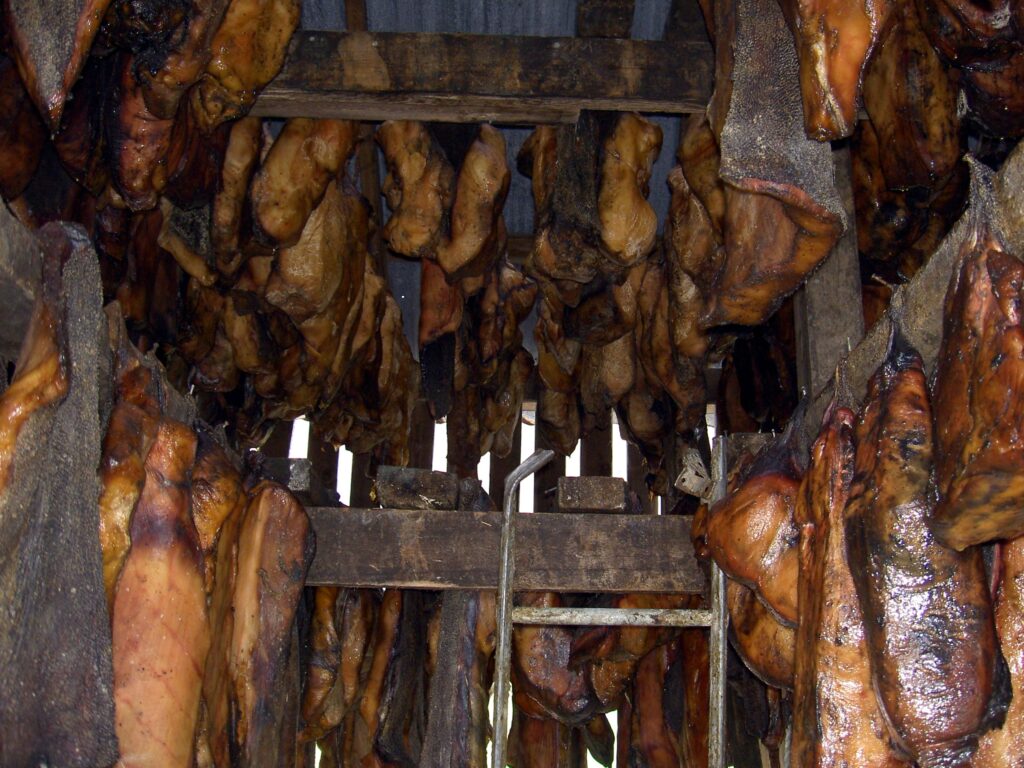
Hakarl’s flavour and texture are frequently described as strong and fishy, with a chewy texture that can be difficult for some. The dish also has a strong odour, which some compare to ammonia or even rotten eggs. Hakarl is typically eaten in small cubes or slices and is often accompanied by a shot of Brennivin, an Icelandic schnapps.
While hakarl may not be for everyone, it is a unique and traditional Icelandic delicacy that many people still enjoy. It’s also a good source of protein and other nutrients, and some believe it has medicinal properties like improving circulation and aiding digestion. So, if you’re feeling daring and want to try something truly out of the ordinary, try hakarl and discover the bold flavours of Icelandic cuisine.
1: Fried Brain Sandwich (USA)
The Fried Brain Sandwich is a traditional dish from the Midwest region of the United States, specifically Indiana and Kentucky. The dish is exactly what it sounds like: a fried cow’s brain sandwich served on white bread with lettuce, tomato, and mayonnaise.
The cow’s brain is cleaned and soaked in cold water to remove any impurities before being cooked. It is then sliced and coated in a seasoned flour mixture before being fried until crispy and golden brown in hot oil.

The flavour and texture of fried cow’s brain can be contentious. Some say it’s creamy and tender, with a slightly nutty flavour. Others complain that the texture is too mushy or gelatinous, and that the flavour is too strong and off-putting.
Despite its dubious reputation, fried brain sandwiches are still a popular dish in certain parts of the Midwest, where they are considered a regional delicacy. Some people believe it has medicinal properties, such as enhancing brain function and memory.
If you’re feeling adventurous and want to try something truly unique, try a fried brain sandwich and get a taste of American cuisine’s bold flavours. But be aware that it is not for everyone!
Conclusion
We’ve looked at 5 strange and amazing dishes from around the world, each with a distinctive history, cooking method, flavour, and texture. These meals, which range from the century egg in China to the fried brain sandwich in the United States, push the boundaries of what we think is palatable and broaden our horizons in terms of food exploration.
As we’ve seen, tasting new dishes from different cultures can be an interesting and fulfilling experience. We may interact with others and find out more about their customs and way of life. Moreover, it broadens our palates and pushes us to look beyond our regular food choices, leading to a more diverse and healthier diet.
Take a chance and enjoy the adventure the next time you have the chance to try something unique and unexpected. Who knows, you might might find a new cuisine you love!

vurcazkircazpatliycaz.MToYlVLgOsZ8
connascency xyandanxvurulmus.IbRbX8AY2cCh